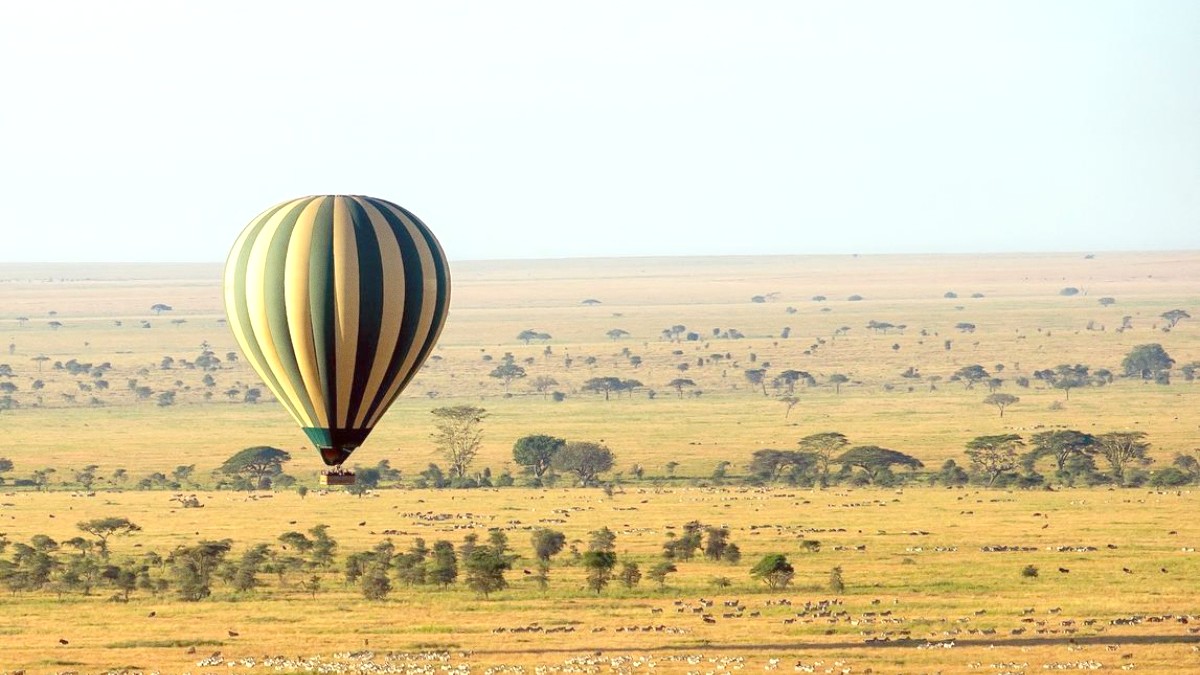
Northern Tanzania, Tanzania
Stick to neutral colors: khaki, tan, olive, brown, and grey. These colors blend with the savanna and avoid attracting certain insects, like tsetse flies. Avoid camouflage. Layering remains critical.
Dry Season focuses on sun protection. Wet Season prioritizes quick-drying materials. Cultural dress code for local villages values modesty.
Comfortable closed-toe shoes like Sneakers or sturdy Sandals. Most time spent inside the vehicle.
Lightweight Hiking boots or robust Walking shoes with ankle support. Protects feet on uneven terrain and from thorns/insects.
Sandals or flip-flops for comfort when relaxing at the lodge or camp. Casual and light footwear.
Keep your documents organized and accessible. They facilitate smooth border passage and enable emergency support.
Bring the right electronics to capture your memories and stay connected where possible. Electricity can be limited in some camps.
Mobile phone connectivity within Serengeti National Park is limited and spotty. Manage your expectations. Most lodges offer Wi-Fi, but it is often slow.
A DSLR or Mirrorless camera for quality. Telephoto zoom lens (70-300mm or 100-400mm) is crucial. Wide-angle lens for landscapes. Extra batteries, large SD cards. Lens cleaning kit and dust blower. Sturdy Camera bag. Empty beanbag for lens stabilization.
Offline Maps (Google Maps, Maps.me). Translation (Google Translate Swahili offline pack). Wildlife Spotting (Merlin Bird ID, Mammals of Africa). Communication (WhatsApp). NordVPN or ExpressVPN for secure browsing.
Cloud storage (Google Drive, Dropbox) for photos. Or bring an External hard drive to back up images. B&H Photo for camera and electronics.
A well-stocked personal health kit ensures your comfort and safety. Carry all prescription medications in original packaging with a copy of your doctor's prescription.
Protect yourself from the intense equatorial sun and insects. Pack items specific to the climate.
Binoculars are essential. At least one pair per person, 8x42 or 10x42 magnification. Bring your camera equipment. A small daypack for water and personal items.
If you plan a walking safari, sturdy closed-toe shoes or light hiking boots are necessary. Long pants protect your legs. A small daypack for water and essentials.
A good wildlife identification guide book specific to East African mammals and birds helps you identify animals. A small, quiet Backpack or collapsible duffel bag works best for vehicle safaris.
These items enhance your comfort, security, and overall travel experience.
Think through your daily needs on safari. Pack for comfort and practicality in a wild environment.
Reduce plastic waste, refill at camps.
For souvenirs and local purchases.
Minimize disposable waste on the go.
Protect yourself and the environment.
Pack clothing that is comfortable, durable, and suited for layering. Choose neutral colors to avoid attracting attention from wildlife or insects.
Pack these items in a soft-sided bag. This makes it easier to fit into safari vehicles, which often have strict luggage limits. Every item should serve a purpose.